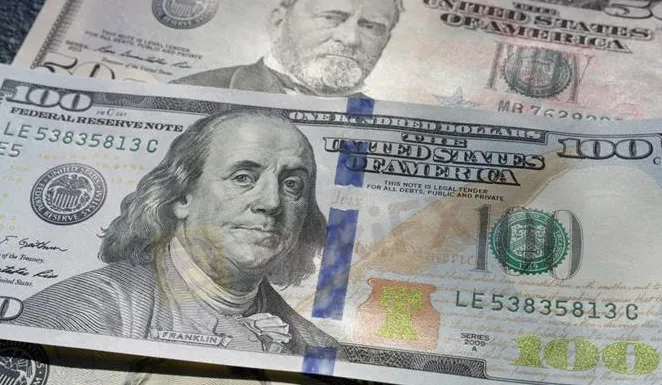简体中文
繁體中文
English
Pусский
日本語
ภาษาไทย
Tiếng Việt
Bahasa Indonesia
Español
हिन्दी
Filippiiniläinen
Français
Deutsch
Português
Türkçe
한국어
العربية
Soaring Treasury Yields Come to Dollar's Rescue
Abstract:The latest talking point in financial markets comes from the soaring US 10-Year Treasury yield.
The latest talking point in financial markets comes from the soaring US 10-Year Treasury yield. The positive dynamic sends a rally to the greenback at the expense of gold prices, indicating that US Treasury yields have played a guiding role in both the metal market and the forex market. For novice traders and newbies, I often encourage them to analyze the prime source affecting their investments. Only when you have made clear the trend of the source can you grasp the trend of your investment. For instance, an analysis of the oil trend is the basis of investments in oil stocks and the Canadian dollar; traders must first analyze the trend of the US dollar before judging the gold trend and trading gold.

Since the trends of US Treasury yields are set to be thrust into the spotlight ahead of financial markets, traders' top priority is to figure out the factors driving the yield's growth, because their duration will determine the yield's trend. As for the current soaring yield, I accredit to three aspects. First of all, such a boom is not a recent occurrence. The US 10-Year Treasury yield has been growing since Aug. 4, 2020, when Russia announced a locally developed Covid-19 vaccine. The claim raised traders' risk appetite, sparking reversals in both the declining yields and the rising gold.
What's more, the market became more aggressive in the wake of Democrats' victories in two Georgia run-off elections on Jan. 6, which means they would take control of both Houses of Congress. The yield at the time swelled to 1.14% from 0.94%. In general, the fading risk aversion is the main reason for the sharp rise in the Treasury yield. The market will grab bids on the positive news of mass vaccination and Biden's assuming office. Thus traders might switch to stocks, pushing the yield higher at the expense of bond prices.
Second, the market is betting that the US government will issue additional debts after seeing Biden‘s large-scale fiscal package, which is another boost to the yield. The third support comes from the market’s expectation on the Feds early interest rate hikes in Sept., which is initially speculated by a few investors, according to tradings of the interest rate futures in the Chicago Mercantile Exchange. Affected by these factors, the US 10-Year Treasury yield will potentially climb to 1.5% or even the two-year high of 1.94%. If the market sees strong Treasury yields enduring in 2021, chances are the dollar will embrace a reversal, while gold will receive further punishment.
Disclaimer:
The views in this article only represent the author's personal views, and do not constitute investment advice on this platform. This platform does not guarantee the accuracy, completeness and timeliness of the information in the article, and will not be liable for any loss caused by the use of or reliance on the information in the article.
Read more

Wall Street Dip on AI Jitters
The U.S. equity market experienced one of its worst trading days this year, with the Nasdaq leading the decline, plunging more than 700 points in the last session. Investor concerns over the AI sector surged following Tesla's earnings miss and Google's higher-than-expected spending, both of which saw sharp declines.

Dollar Calm ahead of FOMC Minutes
The dollar index steadied in the last session, trading above the $105 mark, ahead of the highly anticipated FOMC meeting minutes. Market expectations are leaning towards a more hawkish stance from the U.S. central bank due to a tight labour market. Analysts predict that the Fed is likely to implement two 25 bps rate cuts toward the end of the year, contingent on further evidence that inflation is slowing.

Oil Plummet on U.S. Crude Inventory Surge
Oil prices experienced their steepest decline of 2024, dropping over 5%, following the release of the American Petroleum Institute (API) weekly crude data, which revealed an unexpected inventory build-up exceeding 4 million barrels. This surprise data, coupled with OPEC+'s decision to increase oil supply in the fourth quarter, exerted significant downward pressure on prices.

Yen Drop on Japan FX Officials Comment
The U.S. equity market continued its upward trajectory, buoyed by growing optimism surrounding potential interest rate cuts by the Federal Reserve later this year, following the release of softer-than-expected nonfarm payroll data last Friday, indicating a slowdown in economic performance.
WikiFX Broker
Latest News
CySEC Warns Against Unauthorized Investment Firms in Cyprus
Why Even the Highly Educated Fall Victim to Investment Scams?
Warning Against Globalmarketsbull & Cryptclubmarket
Dukascopy Bank Expands Trading Account Base Currencies
UK Sets Stage for Stablecoin Regulation and Staking Exemption
Axi Bids AUD 52M to Acquire Low-Cost Broker SelfWealth, Outbidding Competitor Bell Financial
Crypto Influencer's Body Found Months After Kidnapping
STARTRADER Issues Alerts on Fake Sites and Unauthorized Apps
Italy’s CONSOB Blocks Seven Unregistered Financial Websites
Bitfinex Hacker Ilya Lichtenstein Sentenced to 5 Years in Prison
Currency Calculator


